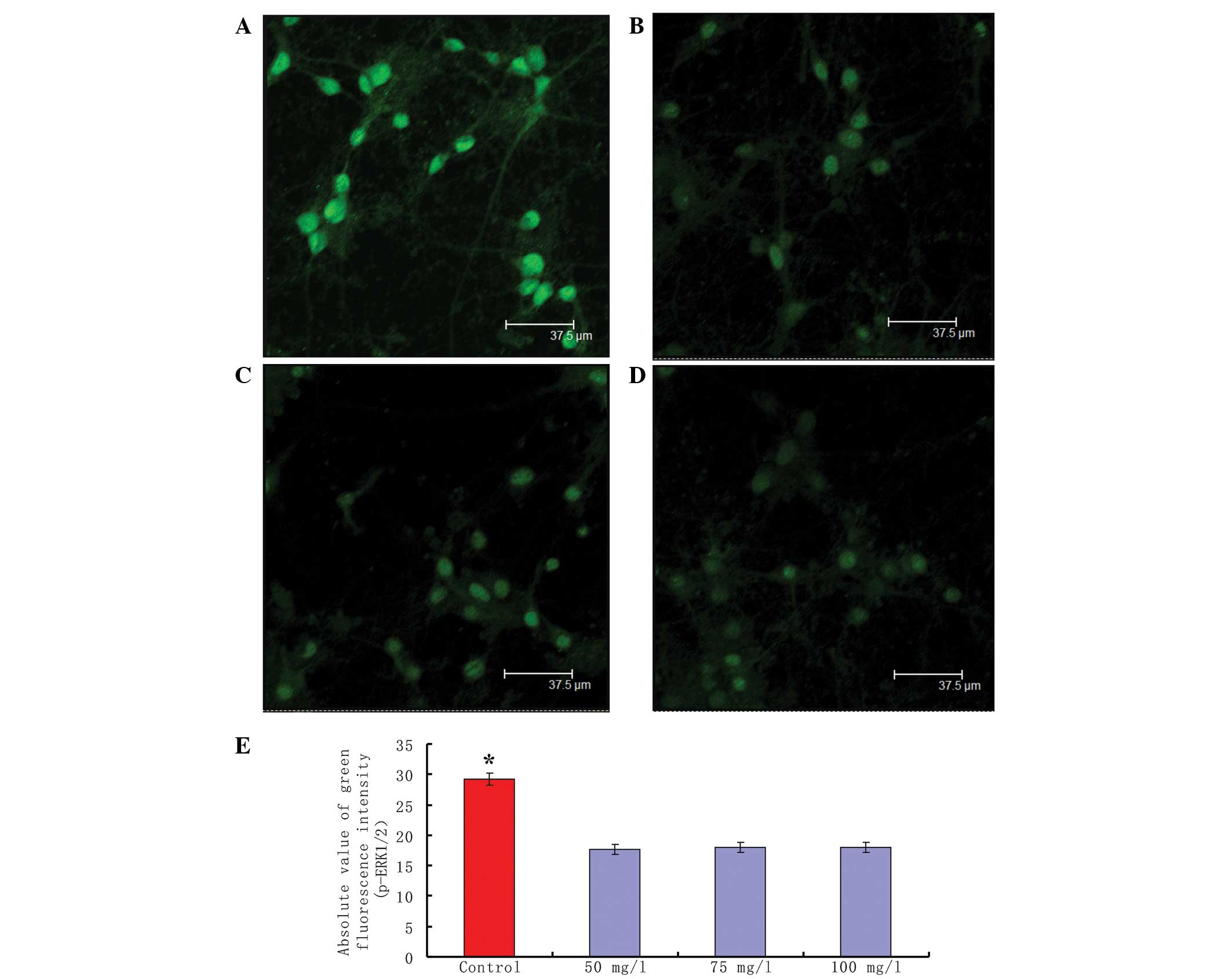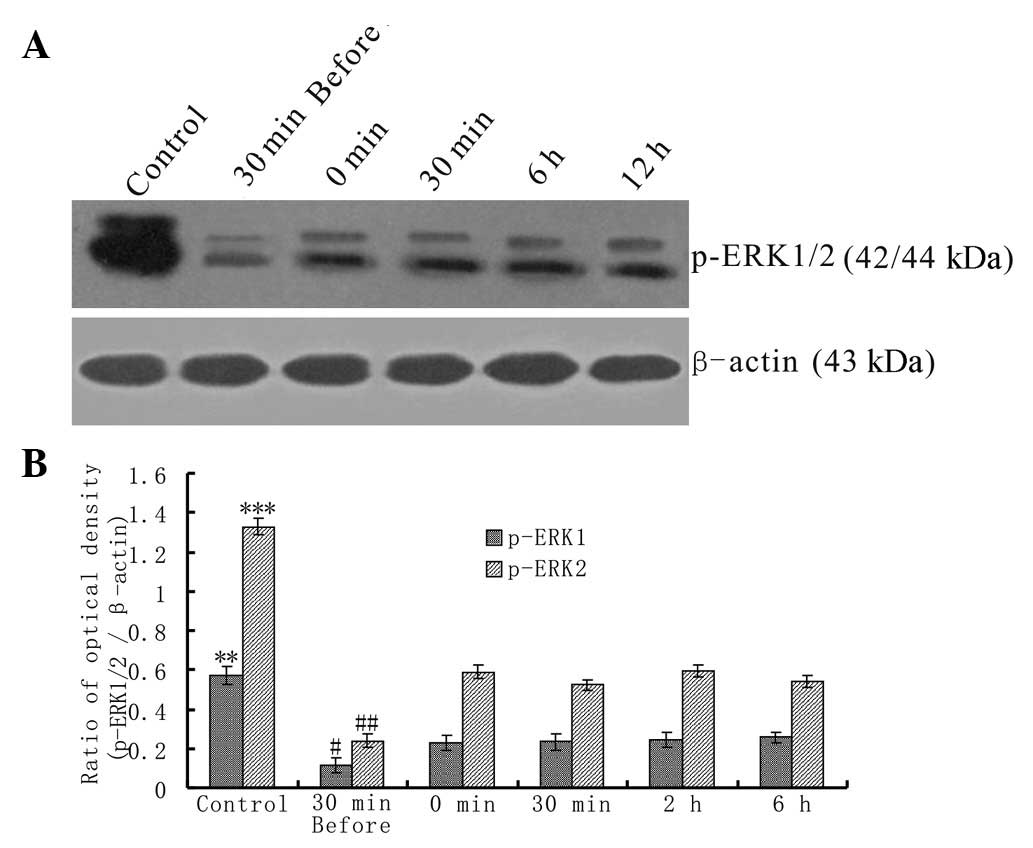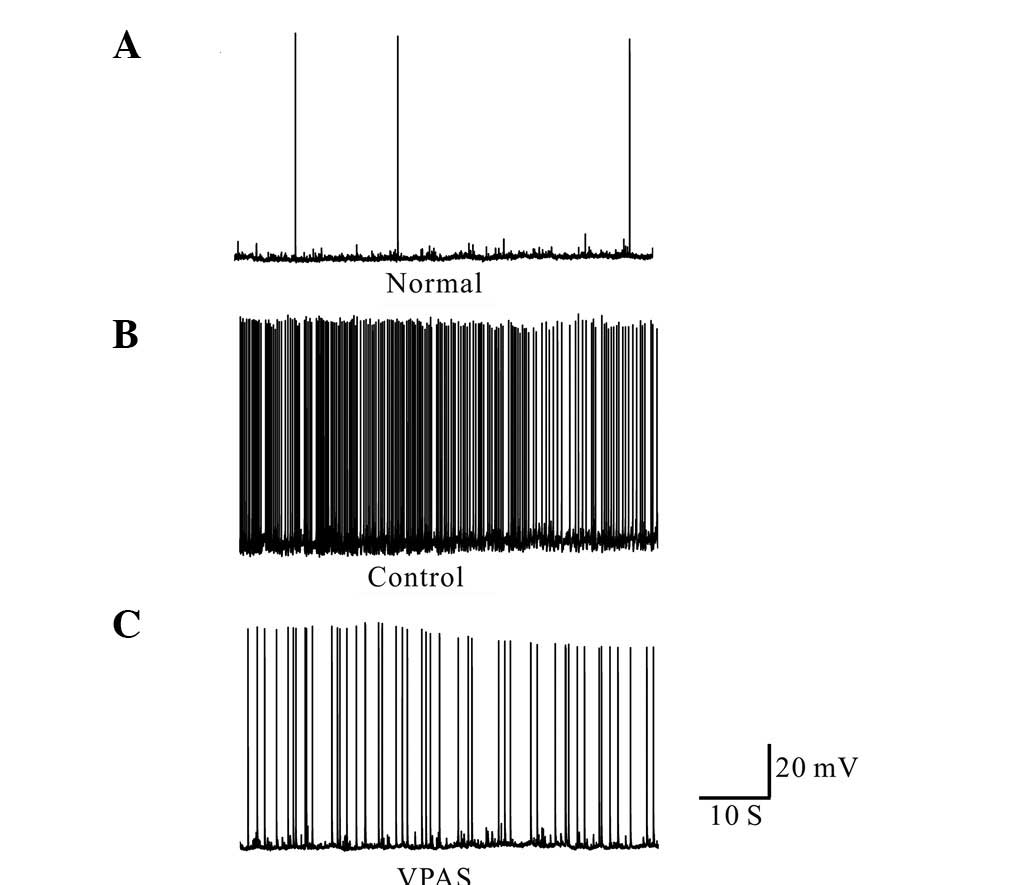|
1
|
Thomas KL and Hunt SP: The regional
distribution of extracelluarly regulated kinase-1 and -2 messenger
RNA in the adult rat central nervous system. Neuroscience.
56:741–757. 1993. View Article : Google Scholar : PubMed/NCBI
|
|
2
|
Li YQ, Xue T, Xu J, Xu ZC, Liu H and Chen
YM: ERK1/2 activation in reactive astrocytes of mice with
pilocarpine-induced status epilepticus. Neurol Res. 31:1108–1114.
2009. View Article : Google Scholar : PubMed/NCBI
|
|
3
|
Matsubayashi Y, Fukuda M and Nishida E:
Evidence for existence of a nuclear pore complex-mediated,
cytosol-independent pathway of nuclear translocation of ERK MAP
kinase in permeabilized cells. J Biol Chem. 276:41755–41760. 2001.
View Article : Google Scholar
|
|
4
|
Whitehurst AW, Wilsbacher JL, You Y,
Luby-Phelps K, Moore MS and Cobb MH: ERK2 enters the nucleus by a
carrier-independent mechanism. Proc Natl Acad Sci USA.
99:7496–7501. 2002. View Article : Google Scholar : PubMed/NCBI
|
|
5
|
Kondoh K, Torii S and Nishida E: Control
of MAP kinase signaling to the nucleus. Chromosoma. 114:86–91.
2005. View Article : Google Scholar : PubMed/NCBI
|
|
6
|
Xu ZC, Chen YM, Xu P, Liu H, Xie YL and
Zeng KB: Epileptiform discharge upregulates p-ERK1/2,
growth-associated protein 43 and synaptophysin in cultured rat
hippocampal neurons. Seizure. 18:680–685. 2009. View Article : Google Scholar : PubMed/NCBI
|
|
7
|
Hu B, Liu C, Bramlett H, Sick TJ, Alonso
OF, Chen S and Dietrich WD: Changes in trkB-ERK1/2-CREB/Elk-1
pathways in hippocampal mossy fiber organization after traumatic
brain injury. J Cereb Blood Flow Metab. 24:934–943. 2004.
View Article : Google Scholar : PubMed/NCBI
|
|
8
|
Berkeley JL, Decker MJ and Levey AL: The
role of muscarinic acetylcholine receptor-mediated activation of
extracelluar signal-regulated kinase1/2 in pilocarpine-induced
seizures. J Neurochem. 82:192–201. 2002. View Article : Google Scholar
|
|
9
|
Bowden CL: New concepts in mood
stabilization: evidence for the effectiveness of valproate and
lamotrigine. Neuropsychopharmacology. 19:194–199. 1998. View Article : Google Scholar : PubMed/NCBI
|
|
10
|
Roux PP and Blenis J: ERK and p38
MAPK-activated protein kinases: a family of protein kinases with
diverse biological functions. Microbiol Mol Biol Rev. 68:320–344.
2004. View Article : Google Scholar : PubMed/NCBI
|
|
11
|
Rincón M and Davis RJ: Regulation of the
immune response by stress-activated protein kinases. Immunol Rev.
228:212–224. 2009.PubMed/NCBI
|
|
12
|
Brown MD and Sacks DB: Protein scaffolds
in MAP kinase signalling. Cell Signal. 21:462–469. 2009. View Article : Google Scholar : PubMed/NCBI
|
|
13
|
Alam R and Gorska MM: Mitogen-activated
protein kinase signalling and ERK1/2 bistability in asthma. Clin
Exp Allergy. 41:149–159. 2011. View Article : Google Scholar : PubMed/NCBI
|
|
14
|
Mebratu Y and Tesfaigzi Y: How ERK1/2
activation controls cell proliferation and cell death: Is
subcellular localization the answer? Cell Cycle. 8:1168–1175. 2009.
View Article : Google Scholar : PubMed/NCBI
|
|
15
|
de Lemos L, Junyent F, Verdaguer E, et al:
Differences in activation of ERK1/2 and p38 kinase in Jnk3 null
mice following KA treatment. J Neurochem. 114:1315–1322.
2010.PubMed/NCBI
|
|
16
|
Merlo D, Cifelli P, Cicconi S, Tancredi V
and Avoli M: 4-Aminopyridine-induced epileptogenesis depends on
activation of mitogen-activated protein kinase ERK. J Neurochem.
89:654–659. 2004. View Article : Google Scholar : PubMed/NCBI
|
|
17
|
Chuang SC, Zhao W, Bauchwitz R, Yan Q,
Bianchi R and Wong RK: Prolonged epileptic form discharges induced
by altered group I metabotroptic glutamate receptor-mediated
synaptic responses in hippocampal slices of a fragile X mouse
model. J Neurosci. 25:8048–8055. 2005. View Article : Google Scholar
|
|
18
|
Xi ZQ, Wang XF, He RQ, et al:
Extracellular signal-regulated protein kinase in human intractable
epilepsy. Eur J Neurol. 14:865–872. 2007. View Article : Google Scholar : PubMed/NCBI
|
|
19
|
Di Maio R, Mastroberardino PG, Hu X,
Montero L and Greenamyre JT: Pilocapine alters NMDA receptor
expression and function in hippocampal neurons: NADPH oxidase and
ERK1/2 mechanisms. Neurobiol Dis. 42:482–495. 2011.PubMed/NCBI
|
|
20
|
Johannessen CU and Johannessen SI:
Valproate: Past, present, and future. CNS Drug Rev. 9:199–216.
2003. View Article : Google Scholar : PubMed/NCBI
|
|
21
|
Tang JM, Yuan J, Li Q, et al:
Acetylcholine induces mesenchymal stem cell migration via
Ca2+/PKC/ERK1/2 signal pathway. J Cell Biochem.
113:2704–2713. 2012. View Article : Google Scholar : PubMed/NCBI
|
|
22
|
Chen J, Giridhar KV, Zhang L, Xu S and
Wang QJ: A protein kinase C/protein kinase D pathway protects LNCaP
prostate cancer cells from phorbol ester-induced apoptosis by
promoting ERK1/2 and NF-{kappa}B activities. Carcinogenesis.
32:1198–1206. 2011.PubMed/NCBI
|
|
23
|
Bittigau P, Sifringer M and Ikonomidou C:
Antiepileptic drugs and apoptosis in the developing brain. Ann NY
Acad Sci. 993:103–114. 2003. View Article : Google Scholar : PubMed/NCBI
|
|
24
|
Koyama R, Yamada MK, Fujisawa S,
Katoh-Semba R, Matsuki N and Ikegaya Y: Brain-derived neurotrophic
factor induces hyperexcitable reentrant circuits in the dentate
gyrus. J Neurosci. 24:7215–7224. 2004. View Article : Google Scholar : PubMed/NCBI
|












